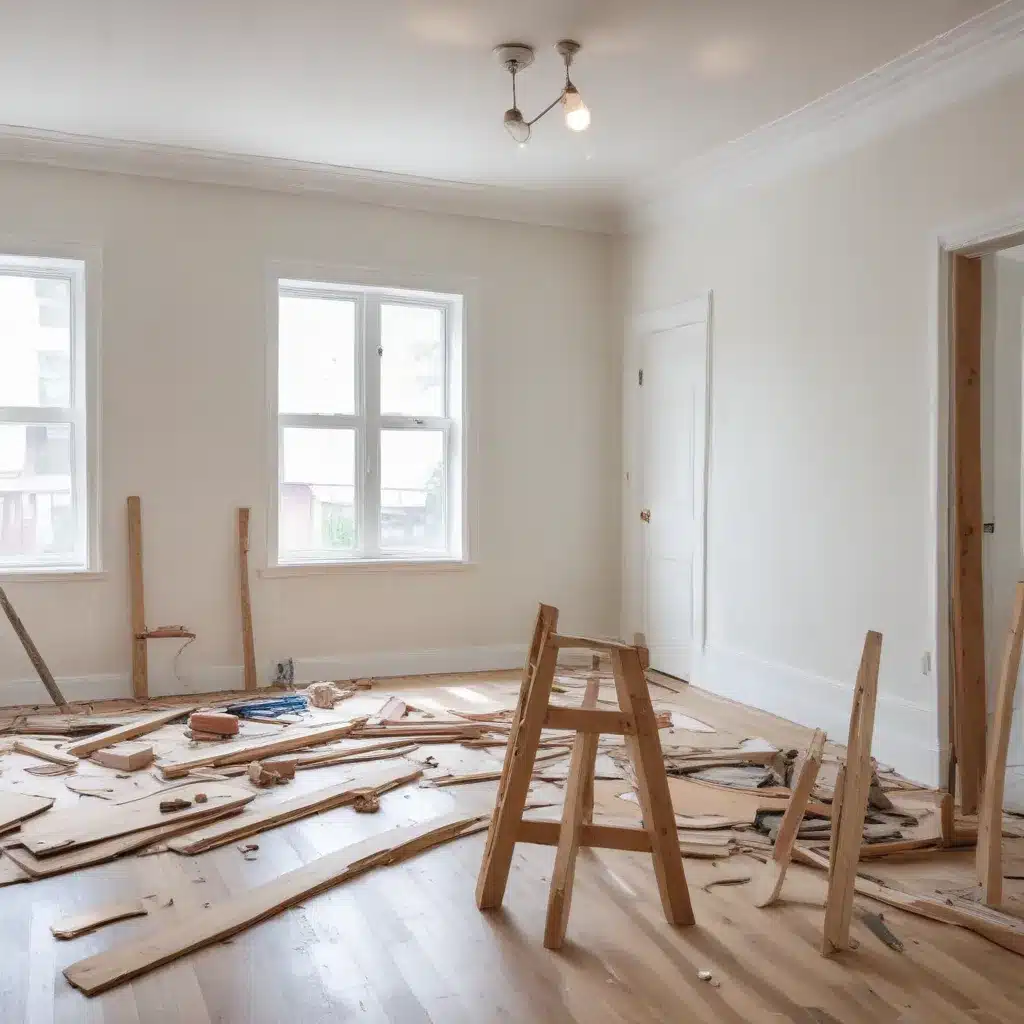As an experienced home improvement consultant, I’ve seen firsthand how even the most meticulous renovation plans can be derailed by unexpected costs. Whether it’s uncovering structural issues, navigating regulatory changes, or dealing with supply chain disruptions, the potential for financial surprises is ever-present. However, with the right strategies and mindset, you can build in the necessary contingencies to protect your renovation project and your wallet.
Understanding the Renovation Landscape
When it comes to home renovations, the old adage “expect the unexpected” couldn’t be more accurate. From hidden plumbing problems to asbestos abatement, the list of potential hidden expenses is extensive. As a homeowner, it’s crucial to approach your renovation with a clear-eyed understanding of the challenges that may arise.
One of the most common hidden costs comes in the form of structural issues. Whether it’s a sagging foundation, outdated electrical wiring, or compromised load-bearing walls, these problems can quickly balloon the scope and budget of your project. Addressing them early on is essential to avoiding costly delays and unplanned expenses down the line.
Another often-overlooked expense is the cost of permits and inspections. Depending on the nature and scale of your renovation, you may need to navigate a maze of local regulations, fees, and red tape. Failing to account for these administrative hurdles can lead to significant setbacks and unexpected charges.
Calculating the True Cost of Renovations
Accurately estimating the cost of a renovation project is a delicate balancing act. It requires carefully considering not just the materials and labor, but also the myriad of ancillary expenses that can arise.
When it comes to material expenses, it’s crucial to factor in more than just the initial purchase price. Shipping costs, delivery fees, and potential price fluctuations can all contribute to a higher-than-expected bottom line. Staying vigilant and flexible in your sourcing can help mitigate these uncertainties.
Labor costs can also be a significant wild card, especially in the current construction landscape where skilled tradespeople are in high demand. Budgeting for potential worker shortages or the need for specialized subcontractors can help you stay ahead of these challenges.
Finally, don’t forget to account for the often-overlooked costs of permits, inspections, and regulatory compliance. These can vary widely depending on your location and the scope of your project, so be sure to do your research and build them into your overall renovation budget.
Planning for Contingencies
The key to successfully navigating the unexpected in a renovation project is to build a realistic budget that accounts for the potential pitfalls. This means allocating a sizable portion of your funds to a well-researched construction contingency.
A common rule of thumb is to set aside between 5-10% of your total project budget for contingencies. This buffer can help you weather unforeseen circumstances, whether it’s a sudden spike in material costs or the need for unanticipated structural repairs.
Of course, the exact percentage you choose will depend on the scope and complexity of your renovation. Factors like the age of your home, the presence of asbestos or lead paint, and the potential for weather-related delays can all influence the size of your contingency fund.
Exploring Financial Options
If your renovation budget is already stretched thin, don’t despair. There are several financial tools and strategies you can leverage to help cover unexpected costs.
Renovation loans, such as FHA 203(k) or Fannie Mae HomeStyle loans, can provide the necessary funding to tackle major projects. These specialized financing options are designed to help homeowners borrow against the future value of their property, giving you the resources to address unforeseen challenges.
Alternatively, you may be able to tap into your home’s equity to fund your renovation. This can be a particularly attractive option if you’ve been in your home for several years and have built up substantial equity. Just be sure to weigh the pros and cons carefully and consult with a financial advisor.
Mitigating Renovation Risks
Identifying and addressing potential risks is crucial to maintaining control over your renovation budget. By proactively addressing these challenges, you can minimize the impact of unexpected costs and ensure your project stays on track.
One of the most significant risks to any renovation project is the presence of structural issues. Whether it’s a crumbling foundation or outdated electrical wiring, these problems can quickly escalate in scope and cost. Conducting thorough inspections and consulting with experienced professionals can help you uncover and address these concerns before they become major headaches.
Navigating the ever-changing landscape of building codes and regulations is another potential minefield. Local authorities may introduce new requirements or change existing rules mid-project, leading to costly delays and compliance issues. Staying informed and maintaining open communication with your local building department can help you stay ahead of these challenges.
Maintaining Financial Resilience
Budgeting for a renovation is a delicate balancing act, but it’s not just about the initial project costs. Ensuring long-term financial resilience is key to protecting your investment and your peace of mind.
Allocating funds for ongoing maintenance and future renovations is essential. By setting aside a portion of your budget for regular upkeep and repairs, you can avoid the need for costly emergency fixes down the line. Similarly, planning ahead for future renovations can help you avoid the financial stress of unexpectedly having to overhaul your home.
Proper insurance coverage is also critical. Make sure you have adequate protection against unexpected disasters, such as floods, fires, or severe weather events. This can help safeguard your investment and provide financial security in the face of unexpected calamities.
By embracing a holistic, proactive approach to renovation budgeting, you can transform your home while protecting your financial wellbeing. With the right strategies and mindset, you can navigate the unexpected with confidence and ensure your renovation project is a resounding success.




